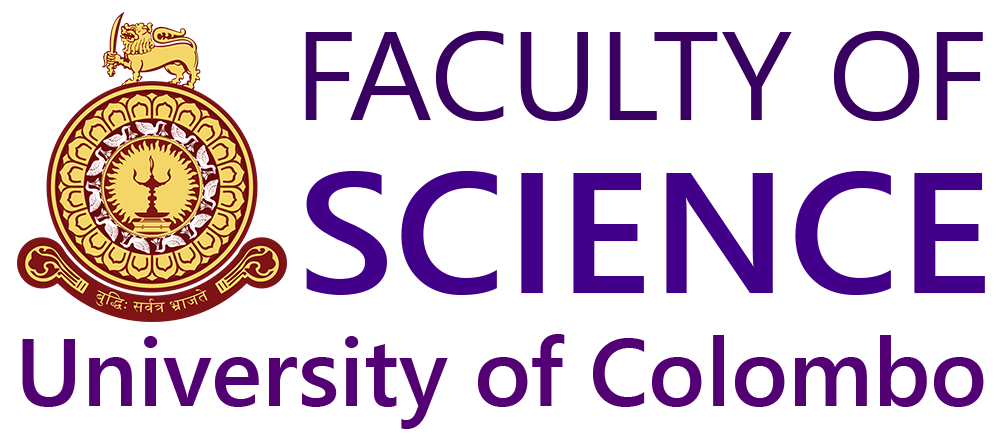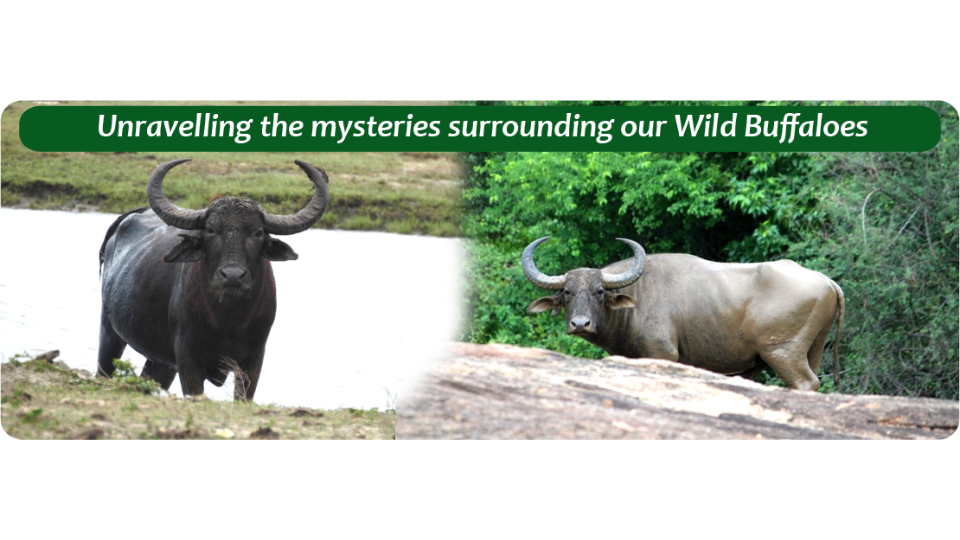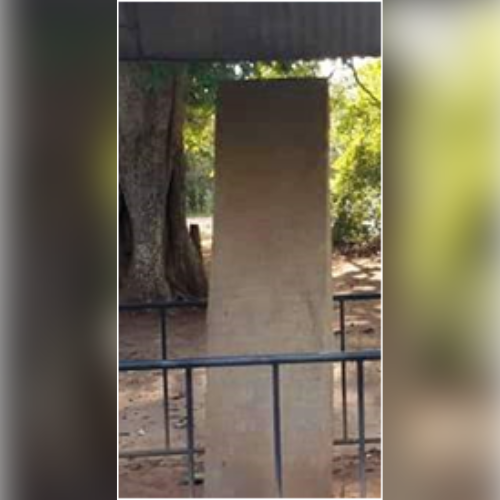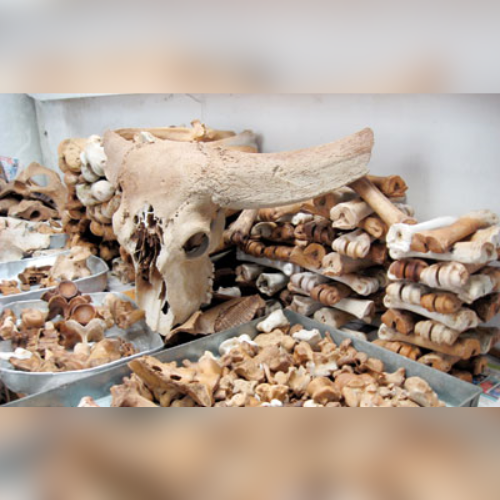Unraveling the mysteries surrounding our Wild Buffaloes
The Buffalo, since ancient times, has been an animal of great reverence owing to its social and cultural significance in the Sri Lankan society. Many chronicles and rock inscriptions (e.g. Galapatha Raja Maha Viharaya, Aluthgama and Hevevissa Korale, Kurunegala) bear ample testimony to this fact. Owning and managing buffalo and cattle herds were considered a noble profession, and the herdsmen addressed as ‘Pattividane’ or ‘Nilamakkare’ were traditionally held in high esteem.

An ancient inscription in the Wilpattu Forest giving details of wild buffalo herds (left) & Bones of animals, including those of buffaloes, taken out of a water hole in Yala (right). The level of fossilization indicates that these bones are around 1,000 to 5,000 years old.
There have been many myths and ideas associated with the origin and taxonomy of the Sri Lankan Wild buffalo!
Some record that wild buffaloes in Sri Lanka are descendants of those that were introduced by Prince Vijaya and his followers from Northern India and indeed prehistoric fossils dating back to 6th century BC may be taken as indicative of this. It is said that ‘indigenous’ wild buffaloes have been captured and tamed by the early inhabitants of the island for use in agriculture.
Equal confusion surrounds its taxonomic affinities. Observations by Phillips (1935) and later by Deraniyagala (1952) led to it being referred to as Bubalis bubalis. Limited studies based on skull features assumed it to be allied to B. arnee, although this had not been verified. These uncertainties have prevented the implementation of conservation efforts targeting the Wild buffalo in Sri Lanka.
On a quest to solve this puzzle
Nilupa Vidana Pathiranage an undergraduate of the Department of Zoology and Environment Sciences, under the keen eye of two researchers from the EcoServ Research Lab – Professor Mayuri Wijesinghe (Department of Zoology and Environment Sciences, University of Colombo) and Dr Saminda Fernando (Department of Zoology, The Open University of Sri Lanka) were on a quest to solve this mystery.

They were particularly interested to know………
- Whether the Sri Lankan wild buffalo is indeed of the species Bubalis arnee?
and if so, - Is the subspecies endemic to our country?
- Is it found in the wild today?
They used measurements of wild buffalo skulls stored at museums and in private collections and those that were collected from the Kumana and Maduru Oya National Parks, to study differences. They also conducted a genetic analysis using fragments from some of these skulls. Three other collaborators Dr Ruwan Illeperuma (Open University of Sri Lanka), Mr Sampath Goonatilake (IUCN, Sri Lanka) and Dr Kelum Manamendra-arachchi (PGIA) provided their expertise.
Our very own buffalo brand
The findings were indeed interesting.
- They found that the Wild buffalo in Sri Lanka could be one of the two species (i) arnee described as the Asian wild buffalo or (ii) B. carabanensis, called the Swamp buffalo.
- They were also able to confirm both craniometrically and genetically that Sri Lanka has a unique subspecies of arnee, which differs from the other three subspecies found in the Asian mainland. The name Bubalis arnee migona proposed by Deraniyagala (1953) can now be verified.

Migona skull characterized by a narrower face and wider horns (Left) than the Swamp buffalo skull (Right)
Do we still have the all-important B.a. migona?
Sadly, the results so far have revealed that the skulls collected from the Kumana and Minneriya by the researchers were of the Swamp buffalo, whereas those that clustered with the Migona were Museum specimens. But let’s not lose hope. We will continue our search in other wild areas.
These research findings have been able to shed some light on the existing uncertainties with respect to the taxonomy of the Wild buffaloes in Sri Lanka. More importantly, Bubalus arnee populations have been in continuous decline over the last half century across its range owing to habitat loss and fragmentation, and competition for foraging grounds with other mega herbivores as well as with the domesticated buffaloes. Hybridization with the domestic species is also a major issue.



Click this link to read the paper



